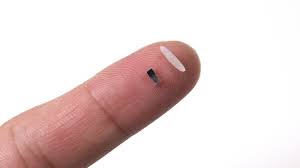
Breaking News
 US Considering a Plan To Split Gaza into Two With One Zone Controlled by Israel and the Other...
US Considering a Plan To Split Gaza into Two With One Zone Controlled by Israel and the Other...
 WHO Drafts Plan For 'Global Health Emergency Corps' To Override Governments On Pandemics...
WHO Drafts Plan For 'Global Health Emergency Corps' To Override Governments On Pandemics...
 3.4 Million Foreign-Born People Claiming Welfare Benefits in Britain
3.4 Million Foreign-Born People Claiming Welfare Benefits in Britain
 Masked Muslim youths take to east London streets to 'defend our community' after police bann
Masked Muslim youths take to east London streets to 'defend our community' after police bann
Top Tech News
 Why 'Mirror Life' Is Causing Some Genetic Scientists To Freak Out
Why 'Mirror Life' Is Causing Some Genetic Scientists To Freak Out
 Retina e-paper promises screens 'visually indistinguishable from reality'
Retina e-paper promises screens 'visually indistinguishable from reality'
 Scientists baffled as interstellar visitor appears to reverse thrust before vanishing behind the sun
Scientists baffled as interstellar visitor appears to reverse thrust before vanishing behind the sun
 Future of Satellite of Direct to Cellphone
Future of Satellite of Direct to Cellphone
 Amazon goes nuclear with new modular reactor plant
Amazon goes nuclear with new modular reactor plant
 China Is Making 800-Mile EV Batteries. Here's Why America Can't Have Them
China Is Making 800-Mile EV Batteries. Here's Why America Can't Have Them
 China Innovates: Transforming Sand into Paper
China Innovates: Transforming Sand into Paper
 Millions Of America's Teens Are Being Seduced By AI Chatbots
Millions Of America's Teens Are Being Seduced By AI Chatbots
 Transhumanist Scientists Create Embryos From Skin Cells And Sperm
Transhumanist Scientists Create Embryos From Skin Cells And Sperm
World's Smallest Pacemaker is Made for Newborns, Activated by Light, and Requires No Surgery

Although it can work with hearts of all sizes, the pacemaker is particularly well-suited to the tiny, fragile hearts of newborn babies with congenital heart defects.
A pacemaker is an implantable device that helps maintain an even heart rate, either because the heart's natural cardiac pacemaker provides an inadequate or irregular heartbeat, or because there is a block in the heart's electrical conduction system.
Smaller than a single grain of rice, the pacemaker is paired with a small, soft, flexible, wireless, wearable device that mounts onto a patient's chest to control pacing. When the wearable device detects an irregular heartbeat, it automatically shines a light to activate the pacemaker.
These short light pulses, which penetrate through the patient's skin, breastbone, and muscles, control the pacing.
Designed for patients who only need temporary pacing, the pacemaker simply dissolves after it's no longer needed. All the pacemaker's components are biocompatible, so they naturally dissolve into the body's biofluids, bypassing the need for surgical extraction.
The paper demonstrates the device's efficacy across a series of large and small animal models as well as human hearts from deceased organ donors.
"We have developed what is, to our knowledge, the world's smallest pacemaker," said John A. Rogers, PhD, professor of Neurological Surgery, Dermatology, and in the McCormick School of Engineering, who led the device development.
"There's a crucial need for temporary pacemakers in the context of pediatric heart surgeries, and that's a use case where size miniaturization is incredibly important. In terms of the device load on the body—the smaller, the better."

 You've Never Seen Tech Like This
You've Never Seen Tech Like This 

